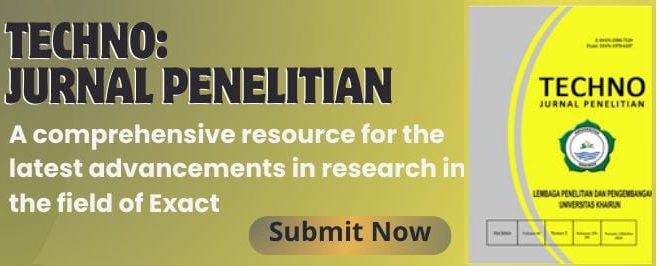Traditional Wisdom and Conservation of the Osing Tribal Community in Banyuwangi
Abstract
In daily life, the interaction of the Osing people with their agricultural environment has resulted in various activities that have local wisdom values. All of these activities are still carried out in the midst of the rapid advancement of digital and online technology-based civilization. In addition, in their social life, the community is consistent in carrying out and preserving various traditional ritual traditions from their ancestral heritage. The research aims to make an inventory of various activities that have local wisdom values and record they carry out traditional conservation of the biological resources in their environment. The research used a qualitative descriptive method, while data collection was carried out through observation and interviews in Focus Group Discussions (FGD). The data analysis process uses cross-checking, summarizing, and synthesizing. The results showed that there were various activities of the Osing community that contained local wisdom values, including farming practices using the Javanese calendar (pranotomongso) and the history of making and placing garden lands that function as buffer areas for paddy fields to prevent landslides. ancestors of the Osing tribe. The division of tasks in farming activities in the rice fields carried out by men and women of the Osing tribe reflects a combination of activities that have aspects of local wisdom. Likewise, the use of straw as animal feed and natural organic fertilizers, as well as the use of a kettle, fishing tools, the use of hunting dogs to get wild animals, and skills in the process of making traditional tools. The Osing community carries out traditional ecosystem-based conservation to protect all plants that grow on their agricultural lands. In addition, in maintaining the sustainability of clean water springs (belik) along the banks of the Sobo and Gulung rivers, they do this by making a ban on cutting down trees that grow around the riverbanks and performing the rebo wekasan salvation ritual.
Keywords
Full Text:
PDFReferences
Agnoletti, M., & Rotherham, I. D. (2015). Landscape and Biocultural Diversity. Biodiversity and Conservation, 24(13), 3155-3165. https://doi.org/10.1007/s10531-015-1003-8
Anazifa, R. D. (2016). Pemanfaatan Sains Tradisional Jawa Sistem Pranotomongso melalui Kajian Etnosains sebagai Bahan Ajar Biologi. In Prosiding Seminar Nasional Pendidikan IPA Pascasarjana Universitas Negeri Malang (Vol. 1, pp. 832-838).
Albuquerque, U. P., da Cunha, L. V. F. C., De Lucena, R. F. P., & Alves, R. R. N. (Eds.). (2014). Methods And Techniques in Ethnobiology and Ethnoecology. New York: Springer Protocols Handbooks, Humana Press.
Bernard, H. R. (2002). Research Methods in Anthropology: Qualitative and Quantitative Methods 3rd Edition. Walnut Creek, California: AltaMira Press
Dolisca, F., McDaniel, J. M., & Teeter, L. D. (2007). Farmers' Perceptions towards Forests: A Case Study from Haiti. Forest Policy and Economics, 9(6), 704-712. http://dx.doi.org/10.1016/j.forpol.2006.07.001
Irawanto, R., Lestari, D., Ariyanti, E., & Deden, M. (2011). Penyebaran Klampok (Syzygium) di Malang Raya. Berk. Penel. Hayati Edisi Khusus, 7, 15-20.
Iskandar, J. (2012). Etnobiologi dan Pembangunan Berkelanjutan. Bandung: AIPI Bandung, Puslitbang KPK LPPM dan MK63 Foundation
Iskandar, J., & Iskandar, B. S. (2016). Etnoekologi dan Pengelolaan Agroekosistem oleh Penduduk Desa Karangwangi Kecamatan Cidaun, Cianjur Selatan Jawa Barat. Jurnal Biodjati, 1(1), 1-12. https://doi.org/10.15575/biodjati.v1i1.1035
Lestari, P. M., Irawati, R. P., & Mujimin, M. (2019). Transformation of Traditional Agricultural Tools to Modern Agricultural Tools Based on The Javanese Local Wisdom. Jurnal Ilmiah Kebahasaan dan Kesastraan: Widyaparwa, 47(1), 1-10. https://doi.org/10.26499/wdprw.v47i1.312
Lewis, J. L., & Sheppard, S. R. (2006). Culture and Communication: Can Landscape Visualization Improve Forest Management Consultation with Indigenous Communities?. Landscape and Urban Planning, 77(3), 291-313. https://doi.org/10.1016/j.landurbplan.2005.04.004
Monk, K. A., De Fretes, Y., & Reksodiharjo-Lilley, G. (2000). Ekologi Nusa Tenggara dan Maluku. Jakarta: Prenhallindo.
Munawaroh, S. (2013). Fungsi Sumber bagi Masyarakat Using Desa Kemiren. JPSPSB. 14 (1): 99-118.
Newing, H., Eagle, C. M., Puri, R. K., & Watson, C. W. (2011). Conducting Research in Conservation: Social Science Methods and Practice. London and New York, NY: Routledge.
Pfeiffer, J. M., & Butz, R. J. (2005). Assessing Cultural and Ecological Variation in Ethnobiological Research: The Importance of Gender. Journal of Ethnobiology, 25(2), 240-278. http://dx.doi.org/10.2993/0278-0771(2005)25[240:ACAEVI]2.0.CO;2.
Prasetyo, B., Chikmawati, T., Walujo, E. B., & Amzu, E. (2018). Ethnoecology: The Traditional Landscape of Osing Tribe in Banyuwangi, Indonesia. Biodiversitas Journal of Biological Diversity, 19(6), 2003-2009. https://doi.org/10.13057/biodiv/d190604
Prasetyo, B. (2019). Etnobiologi Masyarakat Suku Osing di Kabupaten Banyuwangi (Doctoral dissertation, IPB University).
Raynor, B., & Kostka, M. (2003). Back to The Future: Using Traditional Knowledge to Strengthen Biodiversity Conservation in Pohnpei, Federated States of Micronesia. Ethnobot. Res. App., 1, 55-63. http://hdl.handle.net/10125/131
Saradamoni, K. (1991). Filling the Rice Bowl: Women in Paddy Cultivation. Delhi: Sangam Books.
Silva, A. J. D. R., & de Holanda Cavalcante Andrade, L. (2006). Cultural significance of plants in communities located in the coastal forest zone of the state of Pernambuco, Brazil. Human Ecology, 34(3), 447-465. https://doi.org/doi: 10.1007/s10745-006-9026-0
Sheil, D., Puri, R. K., Basuki, I., van Heist, M., Wan, M., Liswanti, N., ... & Wijaya, A. (2004). Mengeksplorasi Keanekaragaman Hayati, Lingkungan dan Pandangan Masyarakat Lokal Mengenai Berbagai Lanskap Hutan: Metode-Metode Penilaian Lanskap Secara Multidisipliner. Bogor: Center for International Forestry Research.
Sufia, R., Sumarmi, S., & Amirudin, A. (2016). Kearifan lokal dalam melestarikan lingkungan hidup (studi kasus masyarakat adat Desa Kemiren Kecamatan Glagah Kabupaten Banyuwangi). Jurnal Pendidikan: Teori, Penelitian, dan Pengembangan, 1(4), 726-731. https://dx.doi.org/10.17977/jp.v1i4.6234
Sumarmi, S. (2015). Local wisdom of osing people in conserving water resources. Komunitas: International Journal of Indonesian Society and Culture, 7(1), 43-51. https://doi.org/10.15294/komunitas.v7i1.3429
Tobing, N. L., Sumarsono, Suhardi, Setiawati, L., & Herliswanny. (1993). Pola Kehidupan Sosial Budaya Masyarakat Using di Kabupaten Banyuwangi, Propinsi Jawa Timur. Jakarta: Departemen Pendidikan dan Kebudayaan.
Waluyo, E. B., Soedjito, H., Widjaja, E. A., & Rifai, M. A. (1991). Penguasaan Etnoekologi Secuplikan Masyarakat Etnik di Indonesia. Makalah Utama pada KIPNAS V. LIPI Jakarta, 3-7.
White Jr, T. H., Camacho, A. J., Bloom, T., Diéguez, P. L., & Sellares, R. (2011). Human perceptions regarding endangered species conservation: a case study of Saona Island, Dominican Republic. Latin American Journal of Conservation, 2(1), 18-29.
DOI: https://doi.org/10.33387/tjp.v10i2.2824
Refbacks
- There are currently no refbacks.
Copyright (c) 2021 Budi - Prasetyo

This work is licensed under a Creative Commons Attribution-NonCommercial 4.0 International License.
-------------------------------------------------------------------------------------------------------------------------------------------------------------------
-------------------------------------------------------------------------------------------------------------------------------------------------------------------
TECHNO: Jurnal Penelitian
Published by: LPPM Universitas Khairun
Addres : Jalan Yusuf Abdurrahman Kampus II Unkhair, Kelurahan Gambesi, 97722 Kecamatan Kota Ternate Selatan, Provinsi Maluku Utara, Email: techno@unkhair.ac.id | URL: http://ejournal.unkhair.ac.id/index.php/Techno
Techno Jurnal Penelitian is licensed under a Creative Commons Attribution-NonCommercial 4.0 International License.



























